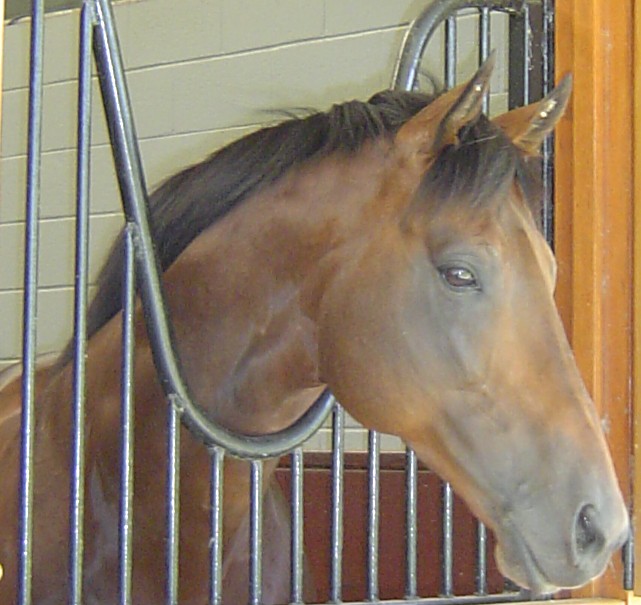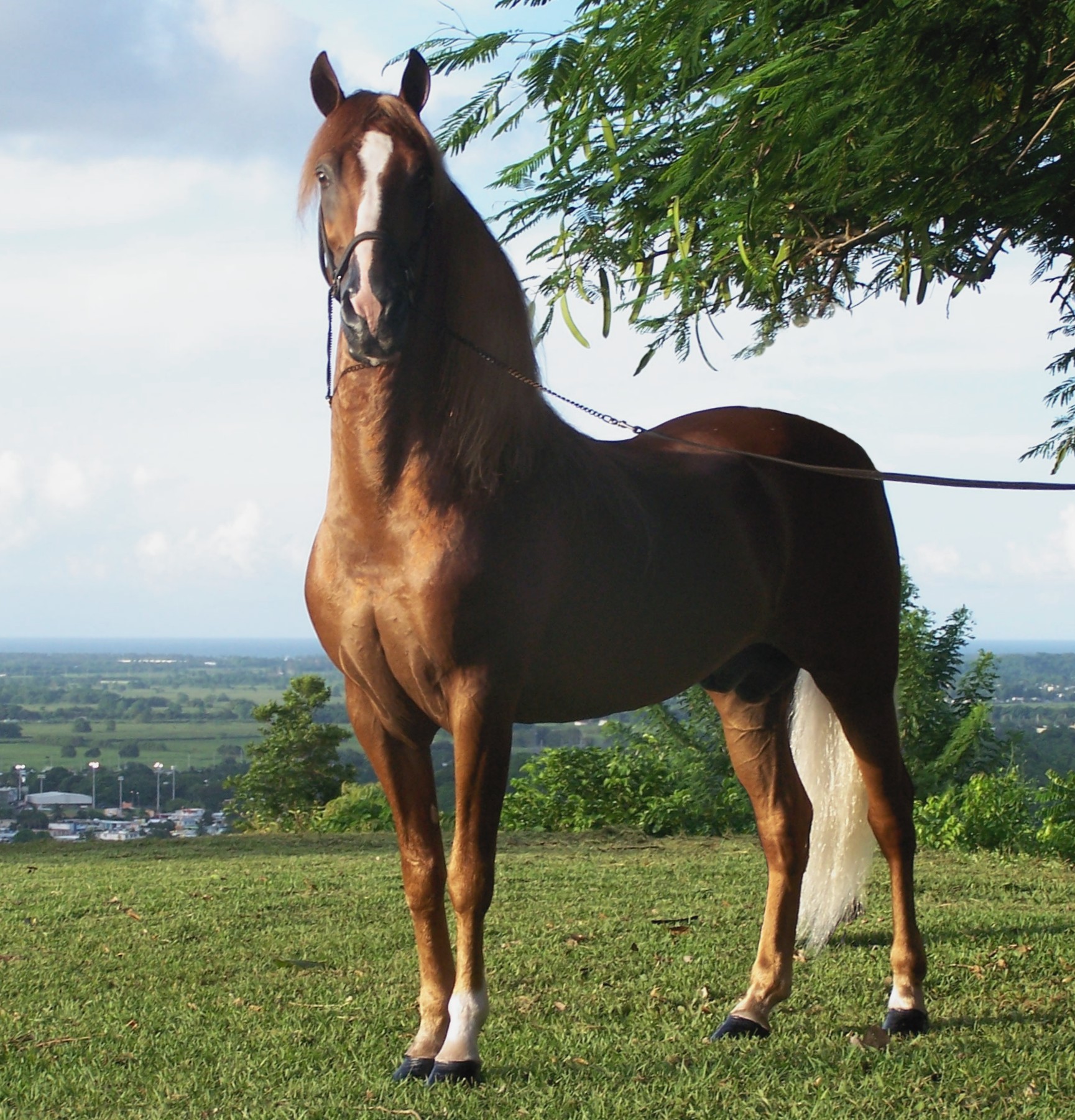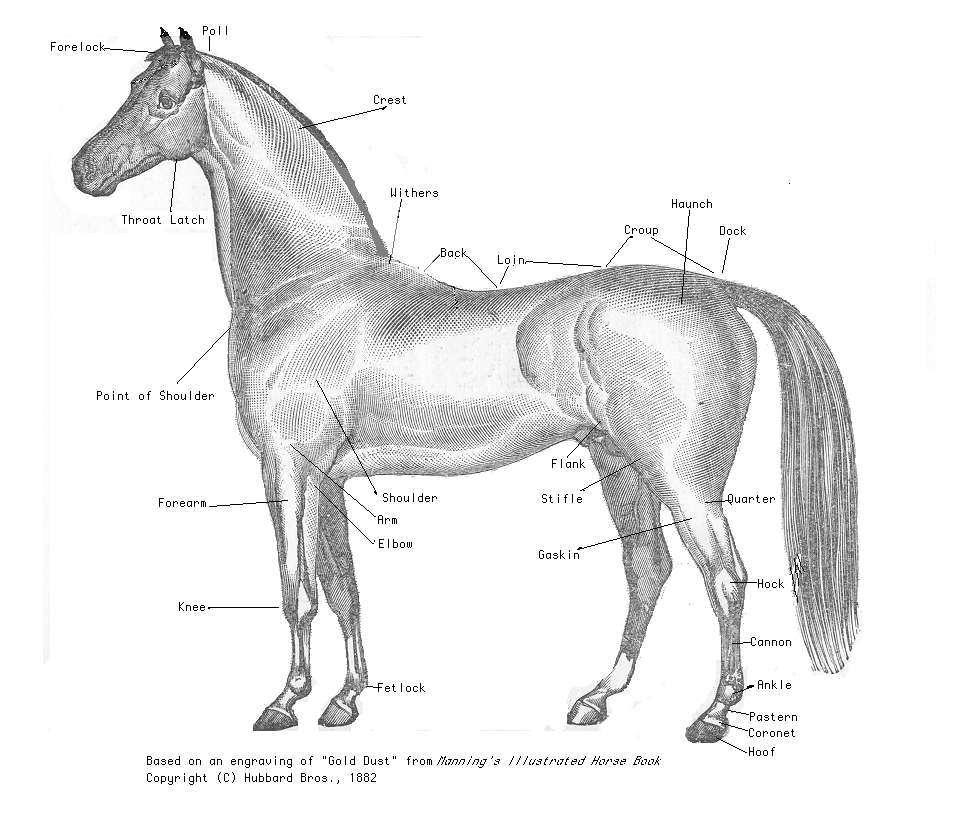|
Chicado V
Chicado V (1950 – ) was a Champion Quarter Horse race horse foaled (born) in 1950, and considered one of the outstanding broodmares of her breed.Wyant "Chicado V" ''Legends 5'' pp. 218–227 She was bred by Frank Vessels of Los Alamitos, California, and trained by Earl Holmes. Chicado V started only six times because knee problems cut short her racing career. However, she won her first two starts while breaking or equaling track records, and was given the title of co-Champion Quarter Running Two-Year-Old Filly by the American Quarter Horse Association (AQHA) in 1952. The next year she ran her last four races, winning once and setting one more speed record. After her last race, in , she was retired from the track to become a broodmare, and had nine foals. Two of her offspring were named Champion Quarter Running Horses, and all her foals had a total of seven stakes race wins. One of her daughters, Table Tennis, went on to become a noted broodmare herself, as did Tabl ... [...More Info...] [...Related Items...] OR: [Wikipedia] [Google] [Baidu] |
American Quarter Horse
The American Quarter Horse, or Quarter Horse, is an American breed of horse that excels at sprinting short distances. Its name is derived from its ability to outrun other horse breeds in races of a quarter mile or less; some have been clocked at speeds up to 44 mph (70.8 km/h). The development of the Quarter Horse traces to the 1600s. The American Quarter Horse is the most popular breed in the United States today, and the American Quarter Horse Association is the largest breed registry in the world, with almost three million living American Quarter Horses registered in 2014. The American Quarter Horse is well known both as a race horse and for its performance in rodeos, horse shows, and as a working ranch horse. The compact body of the American Quarter Horse is well suited for the intricate and quick maneuvers required in reining, cutting, working cow horse, barrel racing, calf roping, and other western riding events, especially those involving live cattle. The ... [...More Info...] [...Related Items...] OR: [Wikipedia] [Google] [Baidu] |
Thoroughbred
The Thoroughbred is a horse breed best known for its use in horse racing. Although the word ''thoroughbred'' is sometimes used to refer to any breed of purebred horse, it technically refers only to the Thoroughbred breed. Thoroughbreds are considered " hot-blooded" horses that are known for their agility, speed, and spirit. The Thoroughbred, as it is known today, was developed in 17th- and 18th-century England, when native mares were crossbred with imported Oriental stallions of Arabian, Barb, and Turkoman breeding. All modern Thoroughbreds can trace their pedigrees to three stallions originally imported into England in the 17th and 18th centuries, and to a larger number of foundation mares of mostly English breeding. During the 18th and 19th centuries, the Thoroughbred breed spread throughout the world; they were imported into North America starting in 1730 and into Australia, Europe, Japan and South America during the 19th century. Millions of Thoroughbreds exist tod ... [...More Info...] [...Related Items...] OR: [Wikipedia] [Google] [Baidu] |
Stakes Race
Glossary of North American horse racing: Additional glossaries at: * Glossary of Australian and New Zealand punting * Glossary of equestrian terms * Parimutuel betting#Parimutuel bet types A B C D E F G H I J L M N O P Q R S T U W References Bibliography * * External linksFrankie Lovato's 365 Days of Racing Term Videos {{Glossaries of sports Horse racing in the United States Horse racing in Canada Gambling terminology Horse Racing United S Sociolinguistics lists Sports terminology Horse racing-related lists United States sport-related lists ... [...More Info...] [...Related Items...] OR: [Wikipedia] [Google] [Baidu] |
Sorrel (horse)
Sorrel is a reddish coat color in a horse lacking any black. It is a term that is usually synonymous with chestnut and one of the most common coat colors in horses. Some regions and breed registries distinguish it from chestnut, defining sorrel as a light, coppery shade, and chestnut as a browner shade. However, in terms of equine coat color genetics there is no known difference between sorrel and chestnut. Solid reddish-brown color is a base color of horses, caused by the recessive ''e'' gene. The term "sorrel" probably comes from the color of the flower spike of the sorrel herb. In practice, in England and the east coast of the United States, all of these shades are usually called chestnut. The term "sorrel" is more common in the western United States. The practical difference is most often not in color, but in usage: horses ridden in the Western tradition are more often referred to as sorrel and horses ridden in the English tradition are chestnut. The American Quar ... [...More Info...] [...Related Items...] OR: [Wikipedia] [Google] [Baidu] |
Go Man Go
Go Man Go (1953–1983) was an American Quarter Horse stallion and race horse. He was named World Champion Quarter Running Horse three times in a row, one of only two horses to achieve that distinction. Go Man Go was considered to be of difficult temperament. While waiting in the starting gate for his first race, he threw his jockey, broke down the gate, and ran alone around the track; he was eventually caught and went on to win the race. During his five years of competition until his retirement from racing in 1960 he had 27 wins, earning more than $86,000 (). Neither of Go Man Go's parents raced. His sire (father), the Thoroughbred stallion Top Deck, was bred by the King Ranch. His dam (mother) hailed from Louisiana; Go Man Go is thought to have gained his swiftness on the track from her. For the first years of Go Man Go's racing career, his owner faced difficulty in registering him with the American Quarter Horse Association (AQHA), a matter that remained unresolved unt ... [...More Info...] [...Related Items...] OR: [Wikipedia] [Google] [Baidu] |
Three Bars
3 is a number, numeral, and glyph. 3, three, or III may also refer to: * AD 3, the third year of the AD era * 3 BC, the third year before the AD era * March, the third month Books * ''Three of Them'' (Russian: ', literally, "three"), a 1901 novel by Maksim Gorky * ''Three'', a 1946 novel by William Sansom * ''Three'', a 1970 novel by Sylvia Ashton-Warner * ''Three'' (novel), a 2003 suspense novel by Ted Dekker * ''Three'' (comics), a graphic novel by Kieron Gillen. * ''3'', a 2004 novel by Julie Hilden * ''Three'', a collection of three plays by Lillian Hellman * ''Three By Flannery O'Connor'', collection Flannery O'Connor bibliography Brands * 3 (telecommunications), a global telecommunications brand ** 3Arena, indoor amphitheatre in Ireland operating with the "3" brand ** 3 Hong Kong, telecommunications company operating in Hong Kong ** Three Australia, Australian telecommunications company ** Three Ireland, Irish telecommunications company ** Three UK, British telecomm ... [...More Info...] [...Related Items...] OR: [Wikipedia] [Google] [Baidu] |
Stallion
A stallion is a male horse that has not been gelded (castrated). Stallions follow the conformation and phenotype of their breed, but within that standard, the presence of hormones such as testosterone may give stallions a thicker, "cresty" neck, as well as a somewhat more muscular physique as compared to female horses, known as ''mares'', and castrated males, called ''geldings''. Temperament varies widely based on genetics, and training, but because of their instincts as herd animals, they may be prone to aggressive behavior, particularly toward other stallions, and thus require careful management by knowledgeable handlers. However, with proper training and management, stallions are effective equine athletes at the highest levels of many disciplines, including horse racing, horse shows, and international Olympic competition. "Stallion" is also used to refer to males of other equids, including zebras and donkeys. Herd behavior Contrary to popular myths, many stallions do no ... [...More Info...] [...Related Items...] OR: [Wikipedia] [Google] [Baidu] |
Bay Meadows Racetrack
Bay Meadows was a horse racing track in San Mateo, California from 1934 until 2008, in the San Francisco Bay Area in the United States. History Built on the site of an old airfield, Bay Meadows Racecourse was the longest continually operating thoroughbred racetrack in California—having been founded on November 13, 1934—until its closure on August 17, 2008. The innovative William P. Kyne introduced pari-mutuel wagering, the popular Daily Double, the first all-enclosed starting gate, the totalizator board and the photo-finish camera at Bay Meadows. Prior to the track's closure, the Bay Meadows Handicap had been the longest continually run stakes event in California, having been started in 1934. Seabiscuit won this race twice: 1937 and 1938. The track was allowed to remain open during World War II because of its agreement to give 92% of its profits towards the war effort. The track generated more than $4 million for War Relief projects during the war years. Its abilit ... [...More Info...] [...Related Items...] OR: [Wikipedia] [Google] [Baidu] |
Horse Gait
Horses can use various gaits (patterns of leg movement) during locomotion across solid ground, either naturally or as a result of specialized training by humans.Ensminger, M. E. ''Horses and Horsemanship'' 6th edition USA: Interstate Publishers 1990 pp. 65–66 Classification Gaits are typically categorized into two groups: the "natural" gaits that most horses will use without special training, and the " ambling" gaits that are various smooth-riding four-beat footfall patterns that may appear naturally in some individuals. Special training is often required before a horse will perform an ambling gait in response to a rider's command. Another system of classification that applies to quadrupeds uses three categories: walking and ambling gaits, running or trotting gaits, and leaping gaits.Tristan David Martin Roberts (1995) ''Understanding Balance: The Mechanics of Posture and Locomotion'', Nelson Thornes, The British Horse Society Dressage Rules require competitors to pe ... [...More Info...] [...Related Items...] OR: [Wikipedia] [Google] [Baidu] |
Equine Conformation
Equine conformation evaluates a horse's bone structure, musculature, and its body proportions in relation to each other. Undesirable conformation can limit the ability to perform a specific task. Although there are several faults with universal disadvantages, a horse's conformation is usually judged by what its intended use may be. Thus "form to function" is one of the first set of traits considered in judging conformation. A horse with poor form for a Grand Prix show jumper could have excellent conformation for a World Champion cutting horse, or to be a champion draft horse. Every horse has good and bad points of its conformation and many horses (including Olympic caliber horses) excel even with conformation faults. Conformation of the head and neck The standard of the ideal head varies dramatically from breed to breed based on a mixture of the role the horse is bred for and what breeders, owners and enthusiasts find appealing. Breed standards frequently cite large eyes, a ... [...More Info...] [...Related Items...] OR: [Wikipedia] [Google] [Baidu] |
Starting Gate
A starting gate also called a starting barrier or starting stalls is a machine used to ensure a fair start to in horse racing and dog racing. History Throughout the history of horse racing, there have been proposals as to how better to start a race. A commonly used starting system for horse races was devised in the mid nineteenth century by Admiral Rous, a steward of the Jockey Club and public handicapper. A starter, standing alongside the jockeys and horses, dropped his flag to signal the start. An assistant some 100 yards down the course raised a second flag to indicate false starts. An official starter might be well paid, but his duties were very demanding. Early in the twentieth century, he was supported by perhaps a single assistant who primed the spring-barrier, as well as the clerk of the course. In the present day there are many attendants to steady runners from super-structured barrier stalls. The first horse racing starting barriers were simple ropes or occ ... [...More Info...] [...Related Items...] OR: [Wikipedia] [Google] [Baidu] |
Horse Markings
Markings on horses are usually distinctive white areas on an otherwise dark base coat color. Most horses have some markings, and they help to identify the horse as a unique individual. Markings are present at birth and do not change over the course of the horse's life. Most markings have pink skin underneath most of the white hairs, though a few faint markings may occasionally have white hair with no underlying pink skin. Markings may appear to change slightly when a horse grows or sheds its winter coat, however this difference is simply a factor of hair coat length; the underlying pattern does not change. On a gray horse, markings visible at birth may become hidden as the horse turns white with age, but markings can still be determined by trimming the horse's hair closely, then wetting down the coat to see where there is pink skin and black skin under the hair. Recent studies have examined the genetics behind white markings and have located certain genetic loci that influenc ... [...More Info...] [...Related Items...] OR: [Wikipedia] [Google] [Baidu] |


.jpg)





